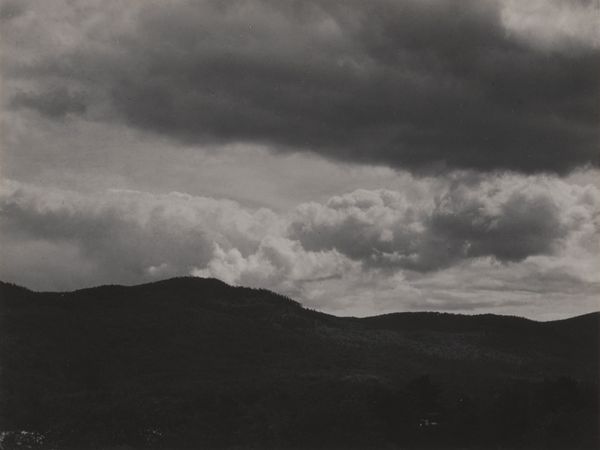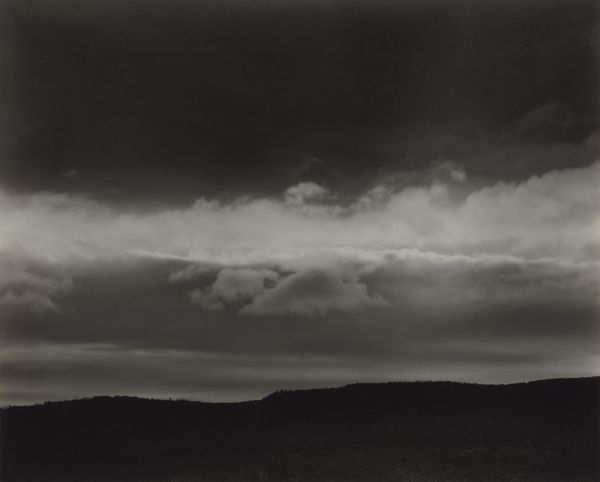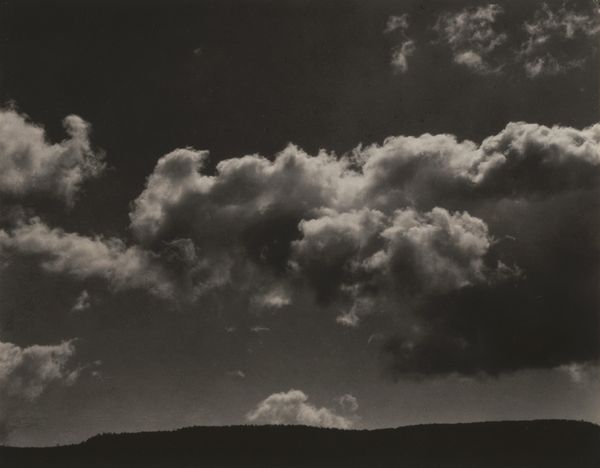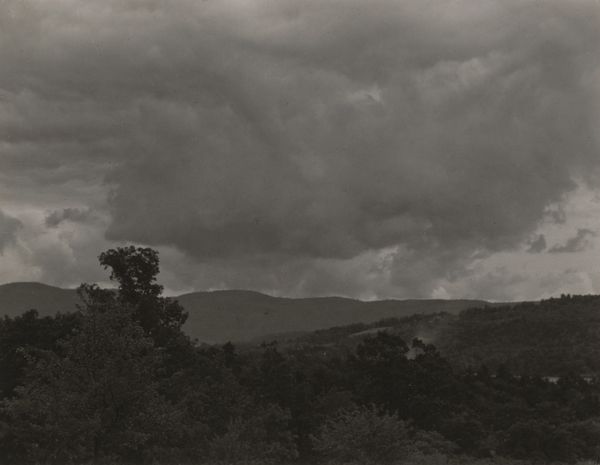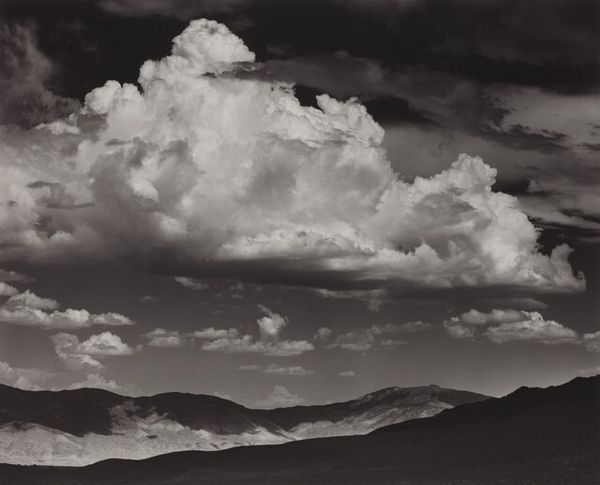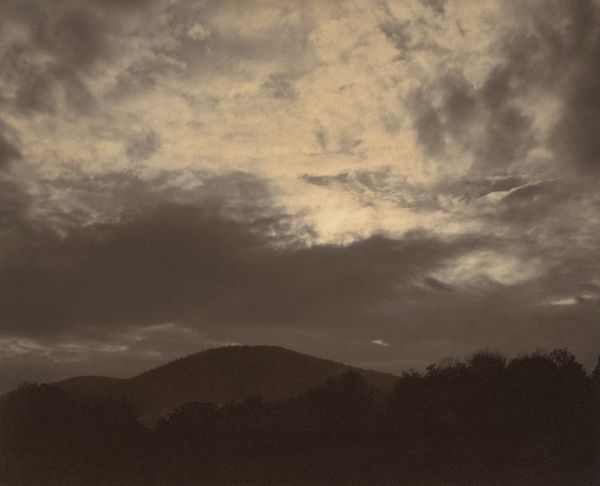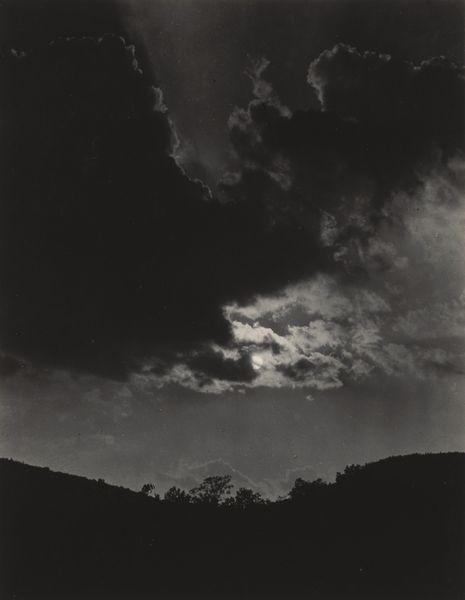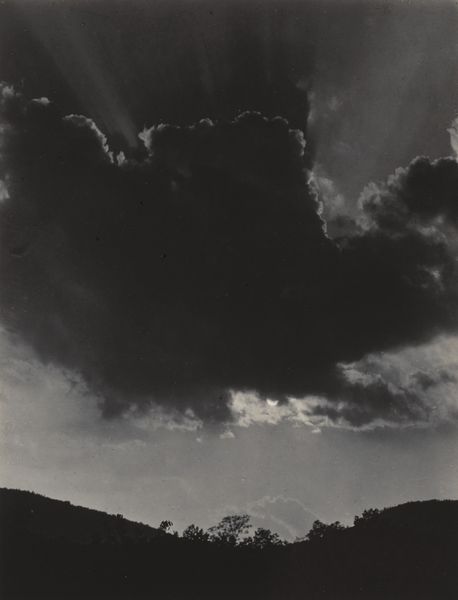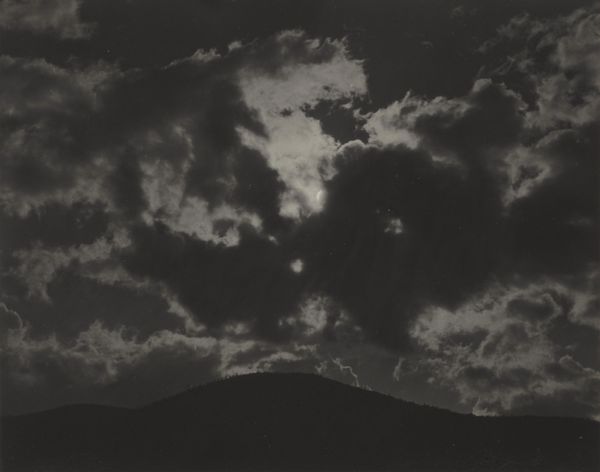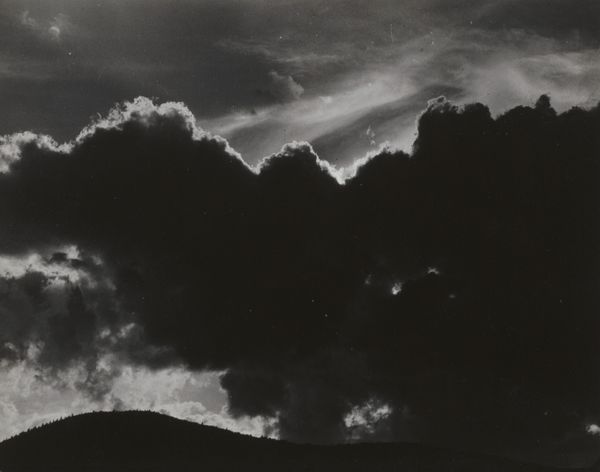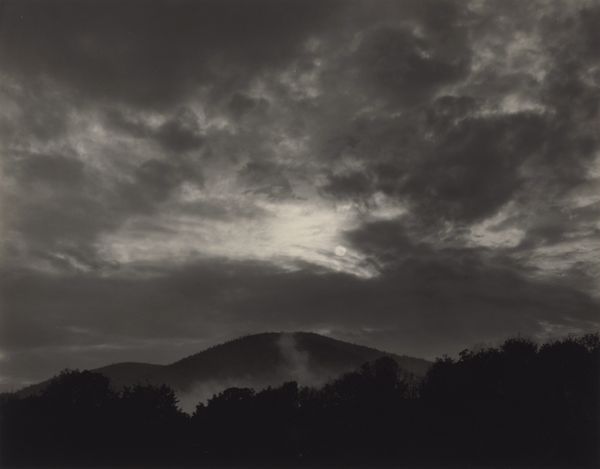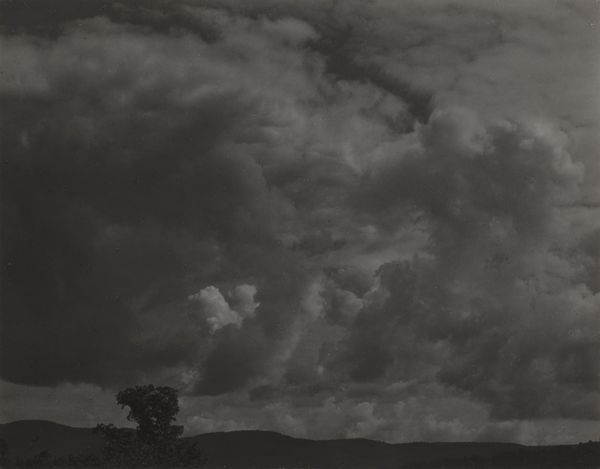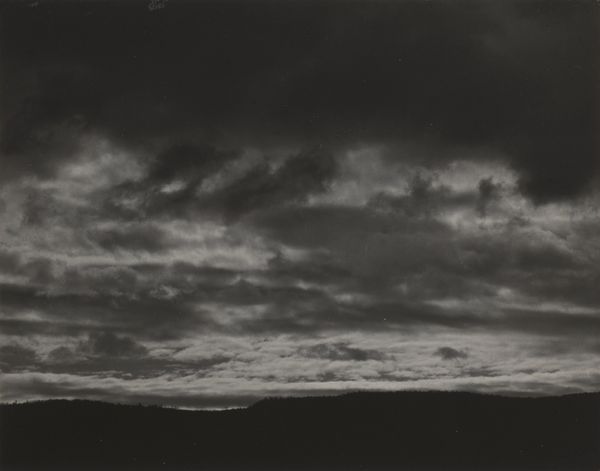
photography
#
cloudy
#
black and white photography
#
snowscape
#
pictorialism
#
landscape
#
black and white format
#
photography
#
low atmospheric-weather contrast
#
monochrome photography
#
gloomy
#
monochrome
#
grey scale mode
#
monochrome
#
shadow overcast
Dimensions: sheet (trimmed to image): 9.3 x 11.8 cm (3 11/16 x 4 5/8 in.) mount: 34.2 x 27.7 cm (13 7/16 x 10 7/8 in.)
Copyright: National Gallery of Art: CC0 1.0
Curator: Here we have Alfred Stieglitz’s photograph, Lake George, likely taken around 1926. It’s a monochrome work capturing a landscape under a dramatic, overcast sky. Editor: Gloomy. That’s the first word that comes to mind. The composition, particularly the heavy clouds, really sets a somber tone. Curator: Stieglitz's landscape work, including scenes of Lake George, signifies a pivotal moment. The place itself was more than just a summer retreat, it was a nexus of progressive ideas, a space where women like Georgia O'Keeffe could cultivate artistic independence during a period of stifling societal restrictions. Editor: You can definitely feel the weight in the gradations of grey. Stieglitz has masterfully balanced light and shadow here, giving the image a strong structural underpinning. Note how the silhouetted trees in the foreground provide a stark contrast to the modulated tones in the clouds. It pulls your eyes upward and into the composition. Curator: Considering the broader narratives surrounding the art world at the time, one wonders about Stieglitz's vantage point, as a privileged white male photographer documenting an environment where women sought liberation. Is he capturing their perspective, or is it inevitably filtered through his own social position? Editor: Regardless of the intentionality, he clearly demonstrates control of photographic tone and texture, which serves a representational purpose; in other words, even capturing light is representational. He coaxes such nuance from a monochrome palette. It shows a deep engagement with the material potential of photography as a medium. Curator: But how does that materiality contribute to the power structures already at play? Does his choice to render this landscape in such a stark and almost romantic way further conceal or reveal the struggles and triumphs happening beneath the surface, particularly for women artists like O'Keefe in his circle? It becomes important to examine his creative decisions as inseparable from broader social and gender dynamics. Editor: Well, considering the interplay of elements within the image, from the dense foliage to the vaporous expanse above, I read a complexity that resists singular interpretation. Perhaps it’s precisely in those visual tensions that the artwork holds its strength, by enabling myriad, yet divergent perspectives. Curator: Perhaps it’s an image ripe for our continued critical probing. Editor: Indeed, a worthy testament to its aesthetic durability.
Comments
No comments
Be the first to comment and join the conversation on the ultimate creative platform.
